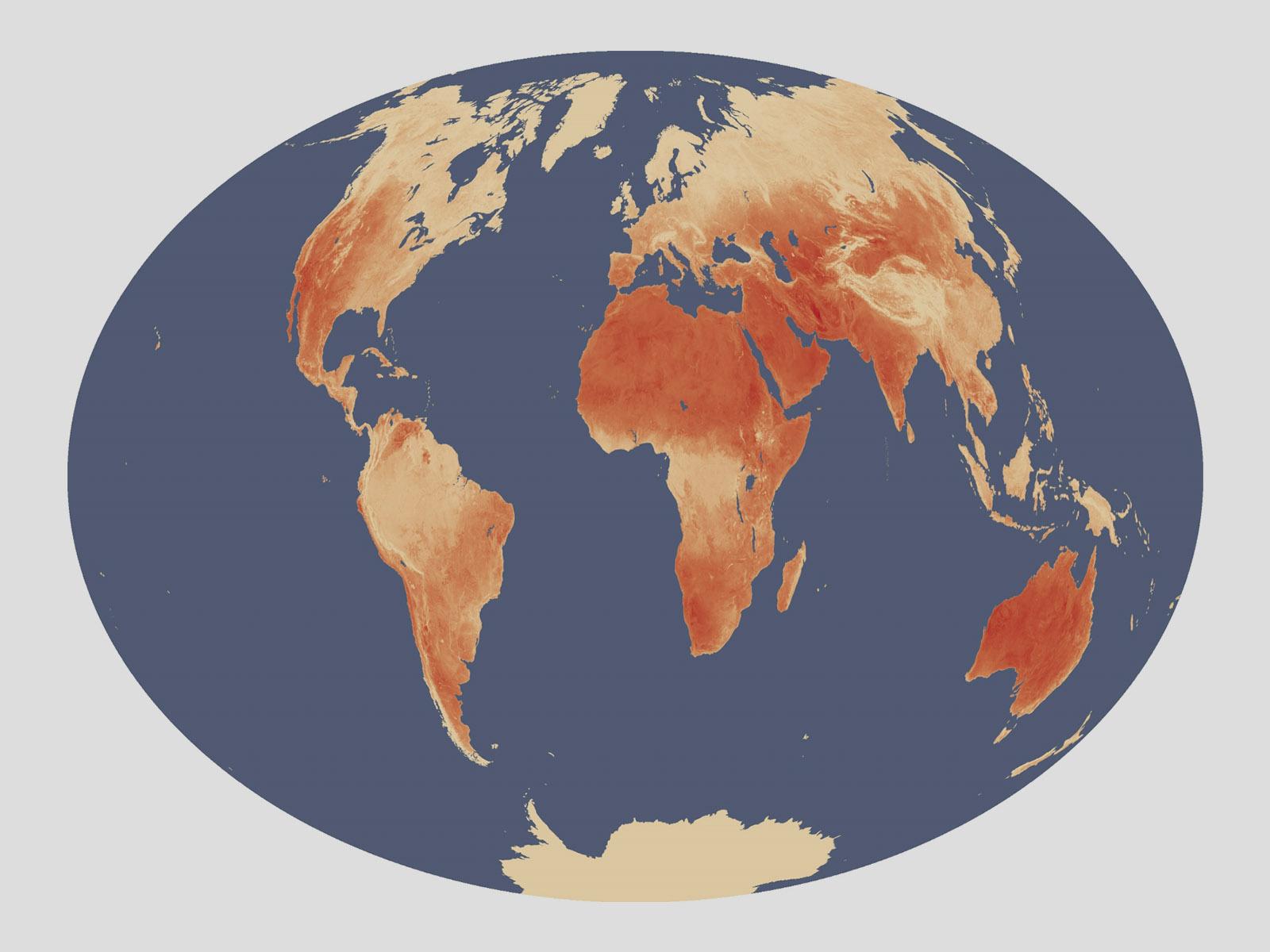The Latest 21st Century Projections of Temperature and Precipitation Changes
Research provides overview of the consequences of a new set of future scenarios based on Earth system model simulations.

Research derives the time left until the world crosses key thresholds of warming and discusses the robustness and uncertainties of those outcomes.
(Image by Jesse Allen and Robert Simmon | NASA)
The Science
A large multidisciplinary effort has produced new anthropogenic emission scenarios for the 21st century exploring alternative futures for humanity’s socio-economic development based on the Shared Socio-economic Pathways (SSPs). Now climate modelers ran these scenarios through their Earth system models and produced corresponding climate system changes. This paper synthesizes results for temperature and precipitation changes over the coming decades, comparing SSP-based scenarios with lower or higher mitigation levels. The scenarios considered produce global warming of over 5 ºC (highest emissions) and as low as 1.5 ºC (highest mitigation). The 1.5 ºC threshold - goal of the Paris Agreement - is, on average across models, projected to be reached within the current decade no matter the scenario.
The Impact
Many different types of research concerned with future global changes base their analyses on these types of scenarios/Earth system models outcomes. This paper will provide the necessary backdrop for many of these studies, including those focused on changes expected in the climate system, impacts of climatic changes on human and natural systems, or on mitigation choices and their consequences. The study also shows the concerted efforts of the many scientists around the world that have developed the latest generation of Earth system models (including the Energy Exascale Earth System Model) and used them to explore the new future emission scenarios, which involved large investments in human and computational resources.
Summary
This overview paper reports temperature and precipitation changes across SSP-based scenarios from the Scenario Model Intercomparison Project of the Coupled Model Intercomparison Project Phase-6, describing a range of global temperature changes from the attainment of the Paris agreement ambition of 1.5 °C to global warming in excess of 5 °C. It includes precipitation projections that correspond to different temperature changes. It highlights robust results across various models and includes sources of uncertainties. There are no striking surprises in the geographic features in the patterns of warming, wetting, or drying, where the first-order change is in the overall intensity and linked to the magnitude of global warming. Overall, the Arctic and northern regions warm the most, land warms more than the ocean, and regions like the Mediterranean, the Amazon, South Africa, and Australia will see strong drying. Some new models do show a higher sensitivity to greenhouse gas forcing, producing new global warming projections that tend to be higher than those of previous generations. These extreme changes cannot be excluded but receive less weight if these models’ ability to reproduce historical behavior is used to gage their reliability.
PNNL Contact
Claudia Tebaldi, Pacific Northwest National Laboratory, Claudia.Tebaldi@pnnl.gov
Funding
Claudia Tebaldi was supported by the Energy Exascale Earth System Model (E3SM) project, funded by US Department of Energy, Office of Science, Office of Biological and Environmental Research. The Pacific Northwest National Laboratory is operated by Battelle for the US Department of Energy. This work has been also supported by the European Union's Horizon 2020 Framework Programme for Research and Innovation “Coordinated Research in Earth Systems and Climate: Experiments, kNowledge, Dissemination and Outreach (CRESCENDO)” and the EVal4CMIP project funded by the Helmholtz Society. Work at Lawrence Livermore National Laboratory was performed under the auspices of the US Department of Energy by Lawrence Livermore National Laboratory. Aurore Voldoire and Roland Séférian were supported by H2020 CONSTRAIN.
Published: April 6, 2021
C. Tebaldi, K. Debeire, V. Eyring, E. Fischer, J. Fyfe, P. Friedlingstein, R. Knutti, J. Lowe, B. O'Neill, B. Sanderson, D. van Vuuren, K. Riahi, M. Meinshausen, Z. Nicholls, K. B. Tokarska, G. Hurtt, E. Kriegler, J.-F. Lamarque, G. Meehl, R. Moss, S. E. Bauer, O. Boucher, V. Brovkin, Y.-H. Byun, M. Dix, S. Gualdi, H. Guo, J. G. John, S. Kharin, Y. Kim, T. Koshiro, L. Ma, D. Olivié, S. Panickal, F. Qiao, X. Rong, N. Rosenbloom, M. Schupfner, R. Séférian, A. Sellar, T. Semmler, X. Shi, Z. Song, C. Steger, R. Stouffer, N. Swart, K. Tachiiri, Q. Tang, H. Tatebe, A. Voldoire, E. Volodin, K. Wyser, X. Xin, S. Yang, Y. Yu, and T. Ziehn. “Climate model projections from the Scenario Model Intercomparison Project (ScenarioMIP) of CMIP6.” Earth Syst. Dynam., 12, 253–293, (2021). https://doi.org/10.5194/esd-12-253-2021.